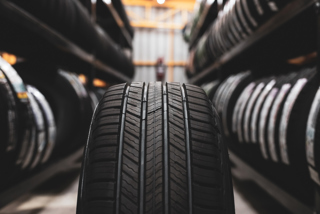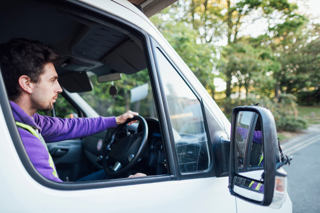Only a quarter of high-mileage business drivers are regularly using driver assistance aids in their vehicles that may reduce collisions, new research suggests.
Among drivers who travel more than 10,000 miles every year, IAM RoadSmart found that more than a third (68%) do not use lane keeping assist technology, while one-third (66%) do not employ speed limiter or collision warning technology.
The findings were based on a survey of 2,008 drivers for road safety charity IAM RoadSmart’s 2024 Road Safety Report.
Cruise control and adaptive cruise control were identified as the most frequently enabled aids, both of which are used regularly by 40% of respondents, closely followed by speed warnings, with 37% often using this technology.
There are significant differences in frequency of use depending on age and gender. Drivers aged 17-34 are around twice as likely to use driver assistance systems compared to someone aged 70 or over, while their use is also higher among male drivers.
Driver assistance systems have become far more prevalent on newer vehicles over the last decade, with many now including adaptive cruise control, intelligent speed assist, lane departure warnings and emergency braking systems, among many others.
More advanced systems, such as drowsy driver warnings and automated lane keeping systems, are providing even greater protection for those on the road, says IAM RoadSmart.
However, it is concerned that many of these benefits are not being used by fleet drivers, potentially endangering themselves and others in the process, while also inflicting reputational and financial harm on the businesses they represent.
IAM RoadSmart director of policy and standards, Nicholas Lyes, said: “It’s ironic that so many businesses rely on technology on a day-to-day basis, yet within their fleet vehicles, their drivers at best seem ambivalent about using technology systems that could save their lives if these were engaged.
“Through the simple fact that they spend the largest amount of time out on the road, high mileage drivers run the greatest risk of being involved in an accident.
“However, our data shows that these drivers are missing out on using critical vehicle aids which will improve both their comfort and their safety.”
Lyes believes that part of the issue is likely to be a lack of understanding among drivers about how each of these systems can benefit them, with some businesses not providing adequate training on why these technologies should be used.
“Many might switch off certain systems because the alarm might be irritating or because they don’t like the feel of the steering wheel autocorrecting to keep the vehicle in a lane,” he added.
“Manufacturers are consistently improving the technology, but this will take time.”
He thinks that it would be valuable for fleet managers to ensure drivers learn more about these systems.
He explained: “While we need more awareness of how these aids work, it’s important to remember that driver assistance systems should always complement safe driving rather than be a replacement for it.”
IAM RoadSmart has produced a free online ADAS guide, which provides individuals and businesses with an explanation on the latest technology, alongside analysis on how it can improve road safety.
























Is that so - 01/04/2025 09:54
Mr Lyes should realise that technology truly advances when the user / chooser wishes and not as has been happening through legislative mandate. Personally on the long runs I love adaptive cruise control. I do not however appreciate speed recognition as the mapping is so out of sync - a local burger chain shows 60mph in its drive through as it is adjacent to the motorway whilst the main town to town A road flags as 20mph (in England). I also find it annoying that having had three years of integration should I wish to keep the car I have become accustomed to driving someone must pay to extend subscription services the driver had enjoyed for free. The primary issue with the majority of these systems is that they work perfectly well under controlled conditions e.g. a well maintained stretch of road with everyone "behaving" according to expected norms which unfortunately is far from the reality faced by most drivers. The lack of well maintained road markings causes issues for those with lane keep assist - I can see where the carriageway runs, unfortunately the camera has no lines to track and so I end up wrestling the car. When there are suitable lines there are many occasions where keeping to the middle of the carriageway is wrong in avoidance of the many not insignificant pot holes. Technology is great when it is working - problem is for the real world where most drivers are on the road there is a lot of development still required.